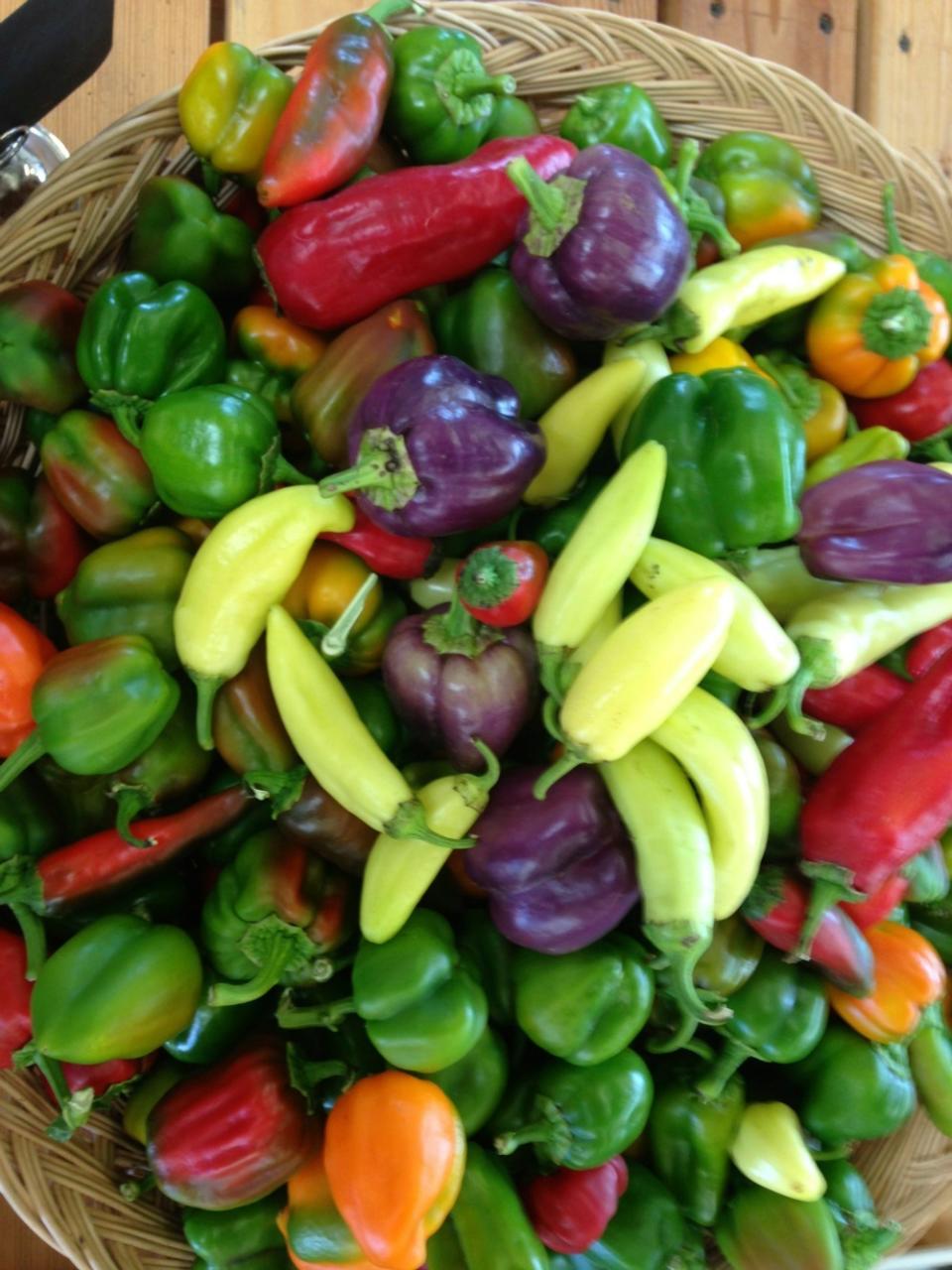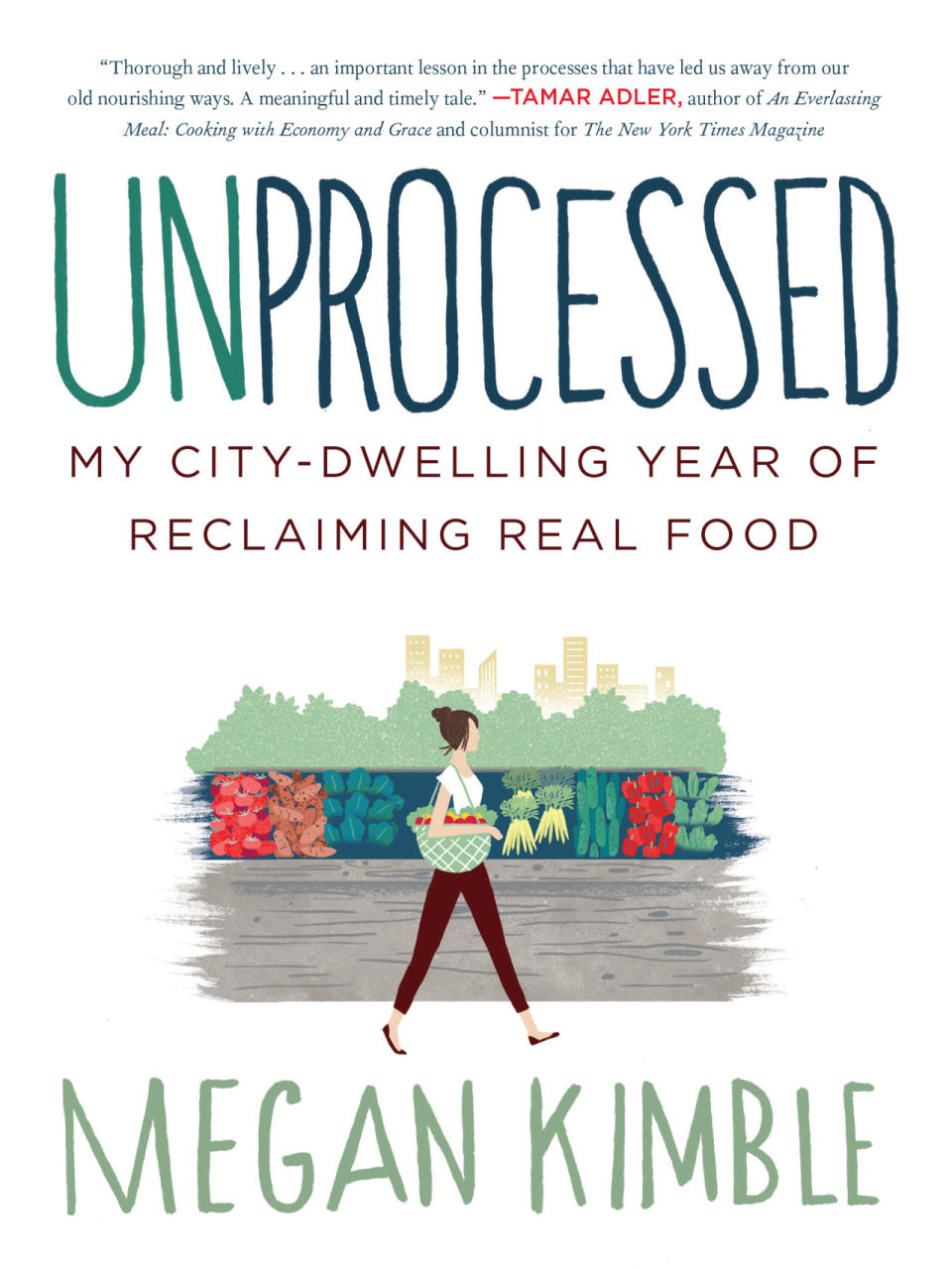A 6-Week Plan for Cutting Out Processed Foods
By Megan Kimble
Wherever you are on your personal food journey, the click of the calendar into a new year offers an opportunity to examine your priorities and shift into something different. Maybe your goal is to eat less sugar or fewer chemicals. Maybe it’s to eat more—more locally, with more flavors, surrounded by more people.
Stocking a Clean Pantry: Your-Go To List of What to Have on Hand
In January of 2012, I set myself a challenge: I’d go an entire year without eating a processed food. I don’t usually do New Year’s resolutions, but there’s something about the break in routine offered by the holidays—or at least, that particular holiday—that allowed me the space and clarity to commit to a new way of eating. Four years later, that challenge became my book, Unprocessed: My City-Dwelling Year of Reclaiming Real Food—and I’m still eating unprocessed.

Photo: Megan Kimble
If you’re hearing the call of the New Year, you can ease into unprocessed eating by focusing on six changes over the next six weeks. I’ll be posting weekly updates on Facebook and Twitter. And you can, too! Chime in with comments, questions, or queries with the hashtag #unprocessednewyear. Like: what the eff is “natural” flavor? Or: how do I prepare rutabaga? Or (real life example): my coworker brought chocolate cookies to work and now the cookies are staring at me whatdoIdo? Post pictures of unprocessed victories, confusions, quandaries, and flops. (For example: the ingredient label on Prego’s Flavored with Meat Marinara sauce? #unprocessedfail).
Building a Healthy Lunchbox: 8 Things to Consider
Of course, like any good challenge, there are prizes. Three signed copies of Unprocessed! Two signed copies of Best Food Writing 2015! (Which includes one essay by yours truly and dozens other essays by amazing writers.) And, the grand prize: one unprocessed consult via phone or Skype with me. The only criteria to win are enthusiasm and humor. And, you know, trying your very best to eat unprocessed.
Okay, so before we start, you do have a copy of Unprocessed, right? All of my tips and tricks and struggles and joys are between those two covers, so snagging a copy for yourself is the easiest way to get rolling on our #unprocessednewyear.
Week 1: Shopping
Let’s ease into this gently. The first step to eating well is shopping well. Don’t worry about eating anything differently this week. Assess your kitchen cabinets. What do you already have that’s unprocessed? What foods do you need to eat up or giveaway to friends or charity? At the market, read the ingredient label on every food you buy. Search for food cooperatives or natural grocery stores nearby. Visit localharvest.com to find a local farmers’ market or consider joining a CSA program.
Unprocessed 101: Shopping
Week 2: Sugar
By far, the hardest food to give up—and stay away from—during my year unprocessed was sugar. I try to avoid all added sugars and add sweetness myself, in the form of local honey, agave, maple syrup, or date paste. Ingredient label scrutiny is crucial here, as many packaged foods—including savory foods like mustard and deli meat—contain added sugars. When faced with the many varieties of sugar—from corn syrup to organic cane—remember: sugar is sugar. There are important differences between types of sugar, but what’s more important than the specifics of each kind is quantity. Less sugar is better sugar. Which is to say: if you’re craving something sweet, make it count.
Unprocessed 101: Sugar
Week 3: Wheat
Step away from the refined grains! Mass market refined flour has been stripped of most its nutrients and is often so poorly processed that many nutritionists attribute its overconsumption to the staggering increase in gluten intolerance and other diet-related diseases. Buy whole grains like wheat berries, barley, or quinoa and add to salad, sautés, or soups. Ask at your local farmers’ market if anyone is selling or milling grain locally, which will be fresher and more nutritious. Buy bread from local artisan bakers. When buying pre-packaged bread, I always look for products made from sprouted grains. Basically, bread—and any grain-based product, like pasta or flour tortillas—should contain grain, salt, yeast, and water. That’s it.
Unprocessed 101: Wheat

Week 4: Vegetables
Okay, let’s go back to those farmers’ markets and CSA programs. Did you find any good markets? Did you join a CSA program? The first rule of unprocessed produce is to eat more if it. A conventionally grown bell pepper is better than no bell pepper. It’s better to eat something fresh and whole—organic or not—than something processed or packaged. Print out the Environmental Working Group’s Dirty Dozen and Clean 15 lists to prioritize your organic spending. A good—and cheap—way to use up the vegetables you grow, buy, or get in your CSA is to pack your lunch at home. At the beginning of the week, I make a big pot of beans and another of a grain, and combine with any vegetables I have on hand—roasted, raw, or sautéed. What’s your favorite take-to-work lunch?
Week 5: Meat
The easiest and cheapest way to unprocess your consumption of meat is simply to eat less of it. Take a vegetarian cooking class or ask a vegetarian friend to teach you how to cook their three favorite meals. Ask yourself: How much meat do I want to be eating? I mostly eat vegetarian, but even that “mostly” allows meat to creep into meals that don’t necessarily need it. When I am eating meat as an unprocessed food, I buy it directly from a farmer or rancher at the farmers’ market; at the Tucson Co-op, where it’s labeled with its source; or at a restaurant where the menu or server tells me exactly where it came from. Ask questions! If that feels awkward, watch the Portlandia duo ask if the chicken is local, and you’ll feel so much more mainstream.
Week 6: Community
Last week, best week! We’ve been at it for five weeks now, so now is the time to dig deeper and ask where you’re spending your food dollars. Are you supporting producers in your community, or endorsing large agribusinesses and multinational corporations? Are you spending money at local markets and restaurants, or at chain restaurants? Eating unprocessed is as much about personal health and wellness as it is about building strong, resilient communities, and one way we can do that is by investing in the processes we want to grow and thrive. Even a ten percent shift in spending can have a huge economic impact on our food system.
The biggest lesson I learned during my year unprocessed is that there is a reason that humans once clustered together into communities—social endeavors turn out better than solo ones. Let’s tackle our crazy, convoluted food system together.
Megan Kimble is the author of Unprocessed: My City-Dwelling Year of Reclaiming Real Food and the managing editor of Edible Baja Arizona.

